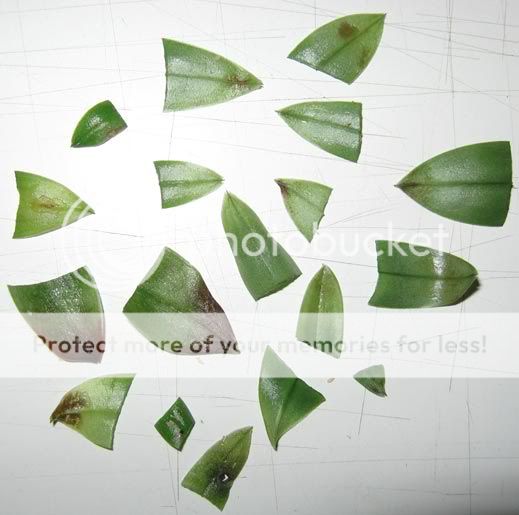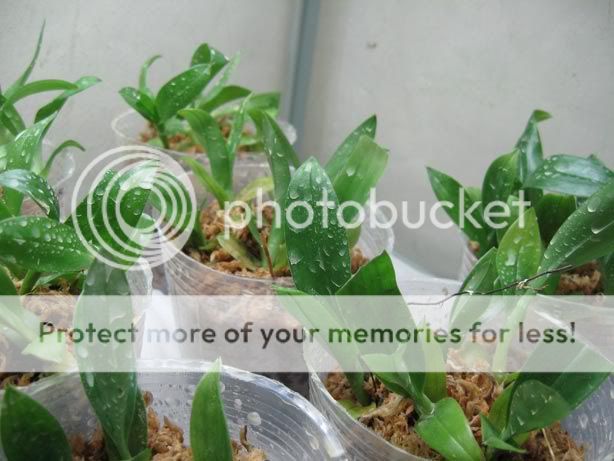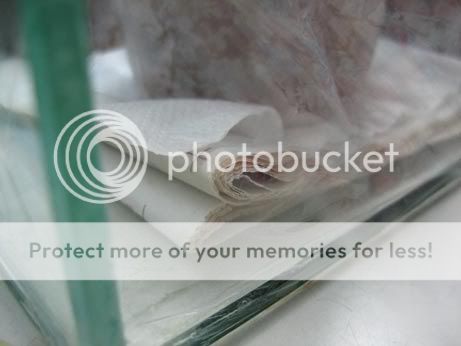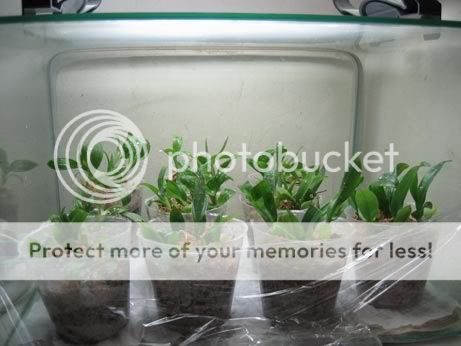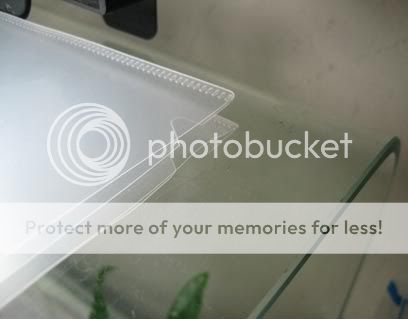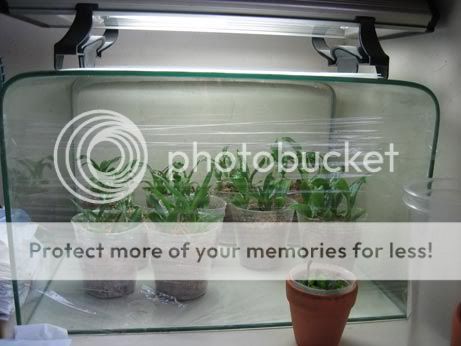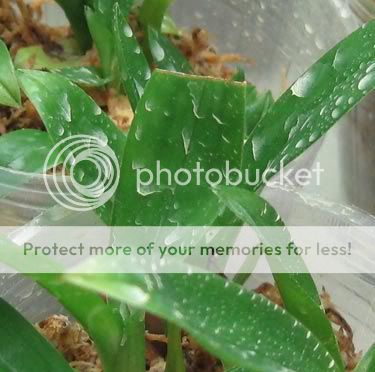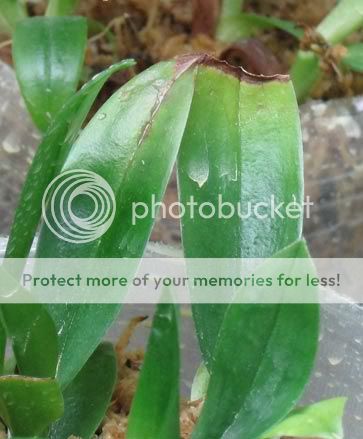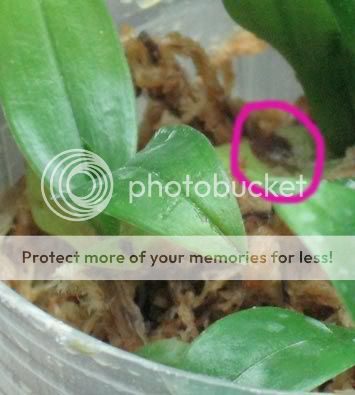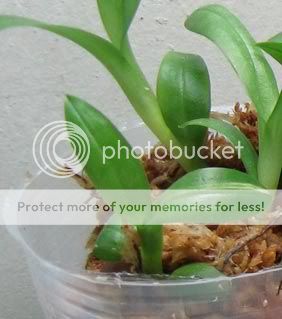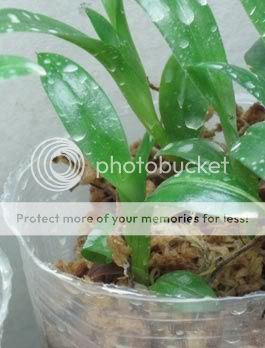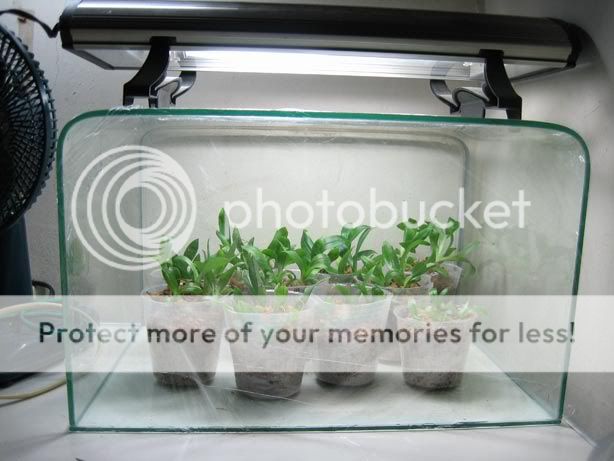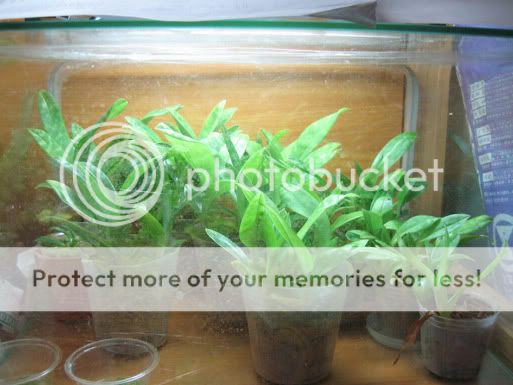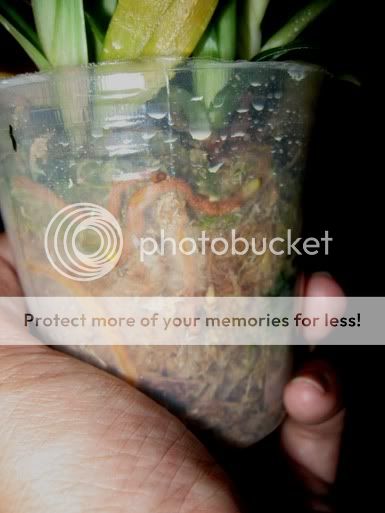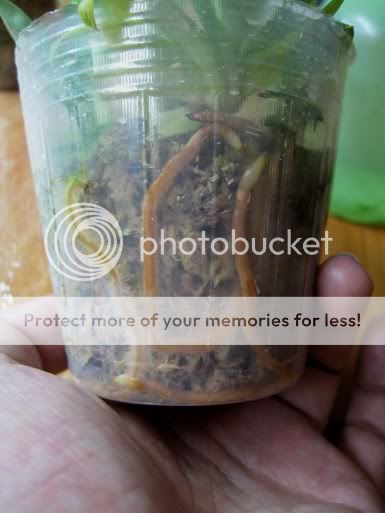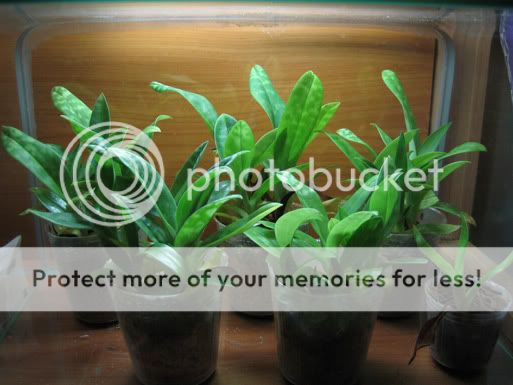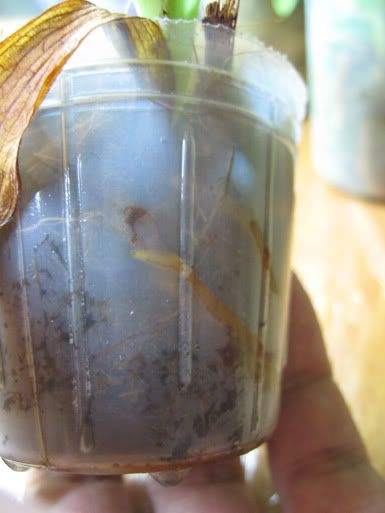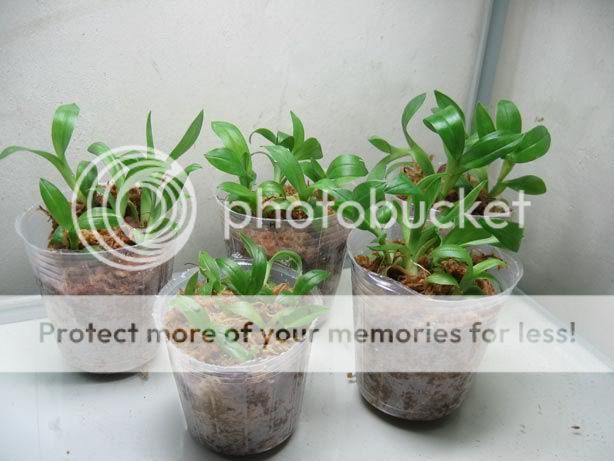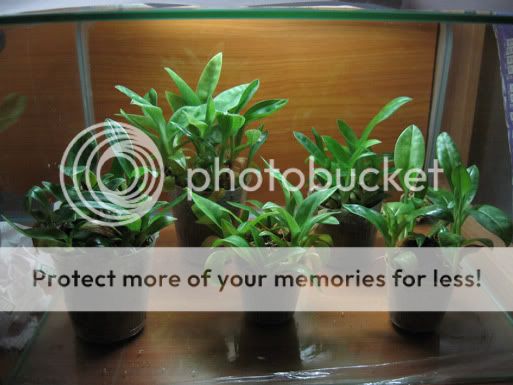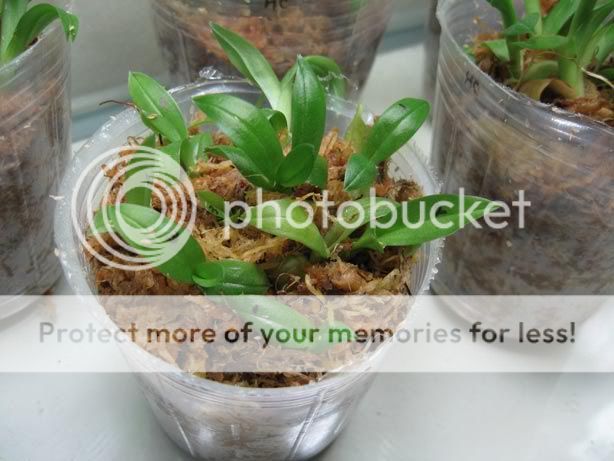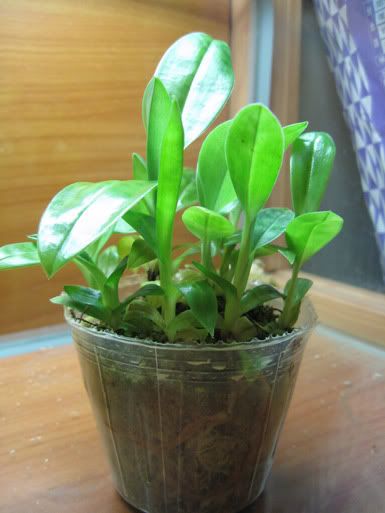There's been a lot going on but I was too lazy to update

...Actually even though they are large seedlings, some are etiolated and the leaves somewhat thin, some even with transparent spots or pitting on them. That's why I'm giving them extra high humidity for the first few weeks. I'll see how they go from here....
I mentioned that some leaves had pitting and transparent spots when I
deflasked. Well, this occurred in one of the flasks with heavy sukhakulii
parentage (37.5%), and just a couple days later, I saw these coalescing into
small water-soaked craters, and spread quite fast into healthy tissue, so I
had to slice off numerous leaf tips with scalpel.
In the past I never had to use fungicides for my flaskling, but I had no
choice this time. I sprayed them with Benlate/Mancozeb mixture at 1g+3g/L,
and a little into the medium too.
By doing so I've wetted the moss too much. I placed the pots over tissue
and some newspapers overnight to blot the excess moisture.
As the leaves dried overnight, I removed the cling wrap cover.
I guess the light was too much for the afflicted plants so I reduced it by
putting a couple translucent folders on the glass pane.
Despite the ugly blotches of residue the fungicide controlled the spread of
disease quickly. Over the next two weeks, I slowly increased air opening
from the small corner opening to quite a large gap, this is how they look now,
so far so good and I haven't lost a single plant yet.
Most of the cuts have healed nicely like this.
But some continue to spread albeit slowly. Here's one with recurring disease,
and one with new disease developing.
New touble brewing; the one circled is a rot on lower leaf that has stopped and dried nicely.
I guess I'll have to recut and repeat the spray these few days. I plan to use
propiconazole this time. Good thing I always keep all sorts of fungicides
handy (for my roses), I have five different types of them!

The plants from
the other flask was very healthy, and it was mostly from regular
lawrenceanum/callosum parentage. Some have begun nice growth.
From my limited past experience with the maudiaes, I found them to be very
forgiving of stagnant conditions but I guess I have to be more careful next
time. I guess the rot found chance to spread, because one flask already had
trouble brewing in it. Or, perhaps the sukhakulii parentage might be a factor
too? (Maybe it hates stagnant condition? Someone can shed light on this?)
CO2 is out of the question now, I'll definitely try it but not until they make
some strong growth. I'll sanitize/leach/fertilize in a few days and I'll post again about it. ^^

 Perhaps I should just give it a try, with a small soda bottle, when the plants have hardened off a bit.
Perhaps I should just give it a try, with a small soda bottle, when the plants have hardened off a bit.



